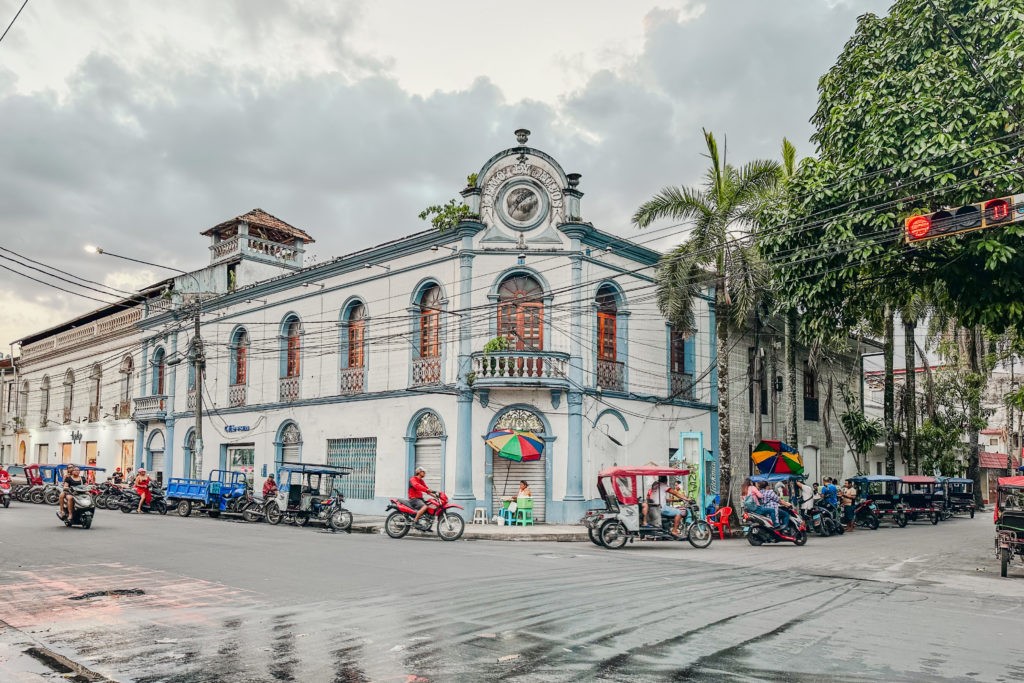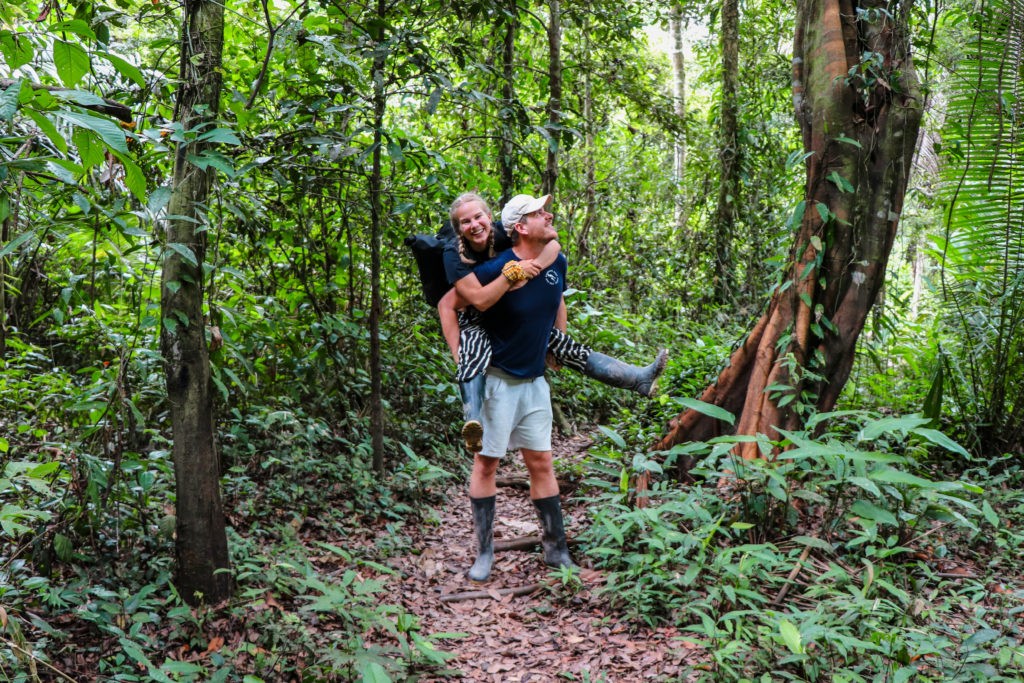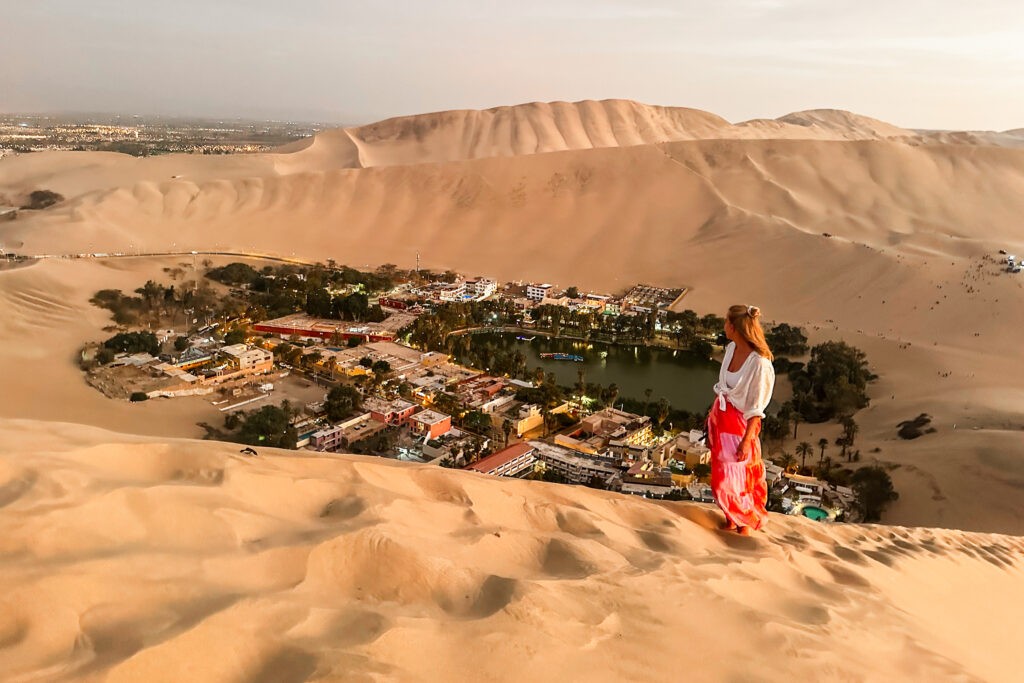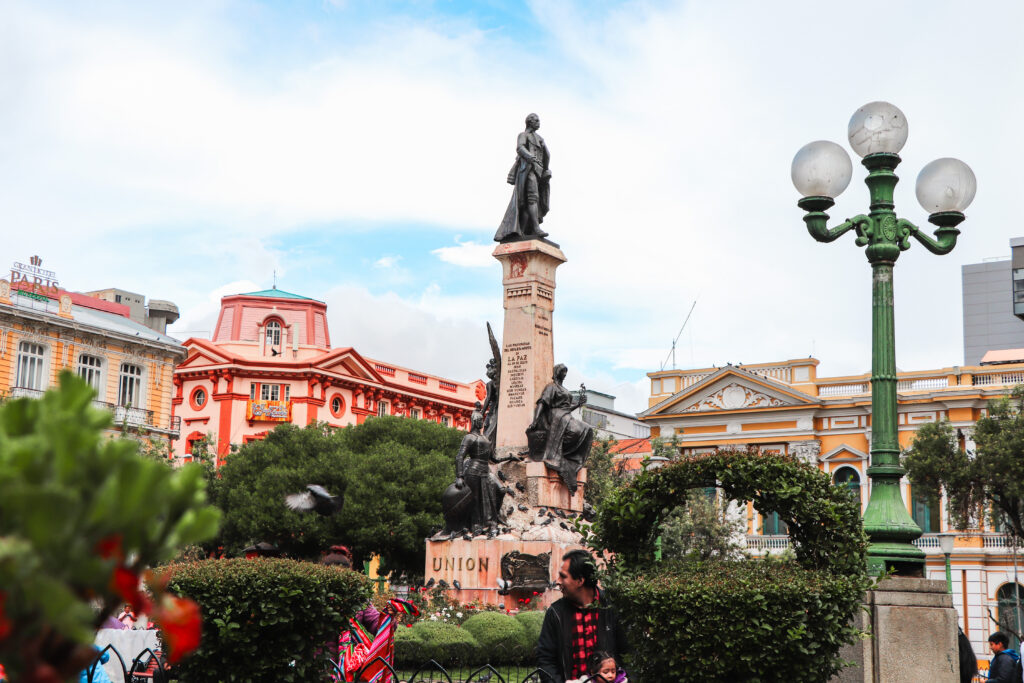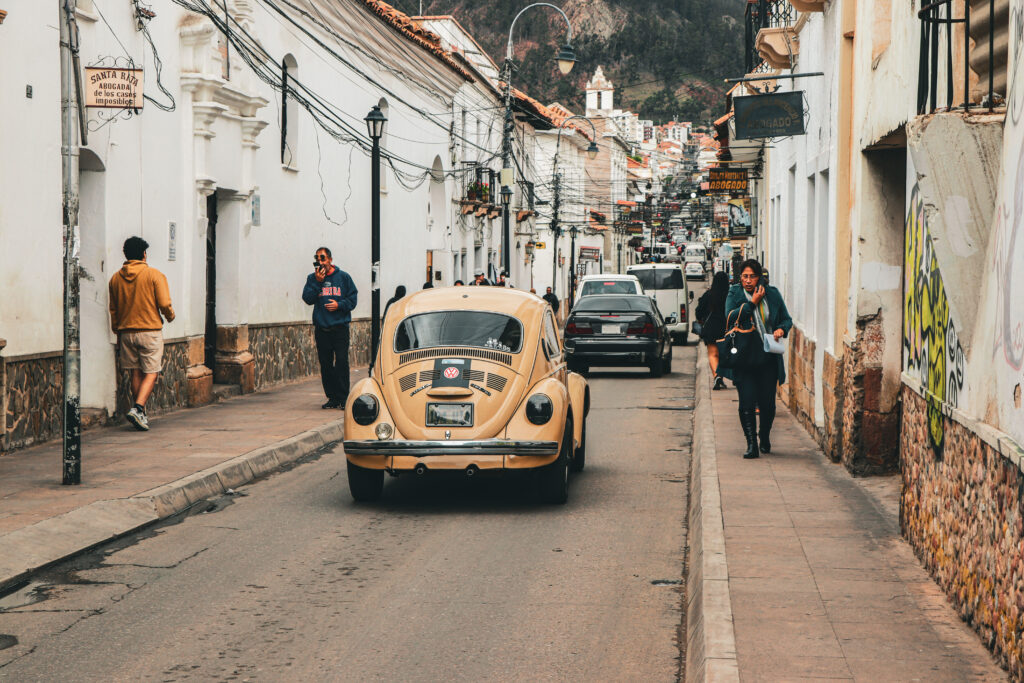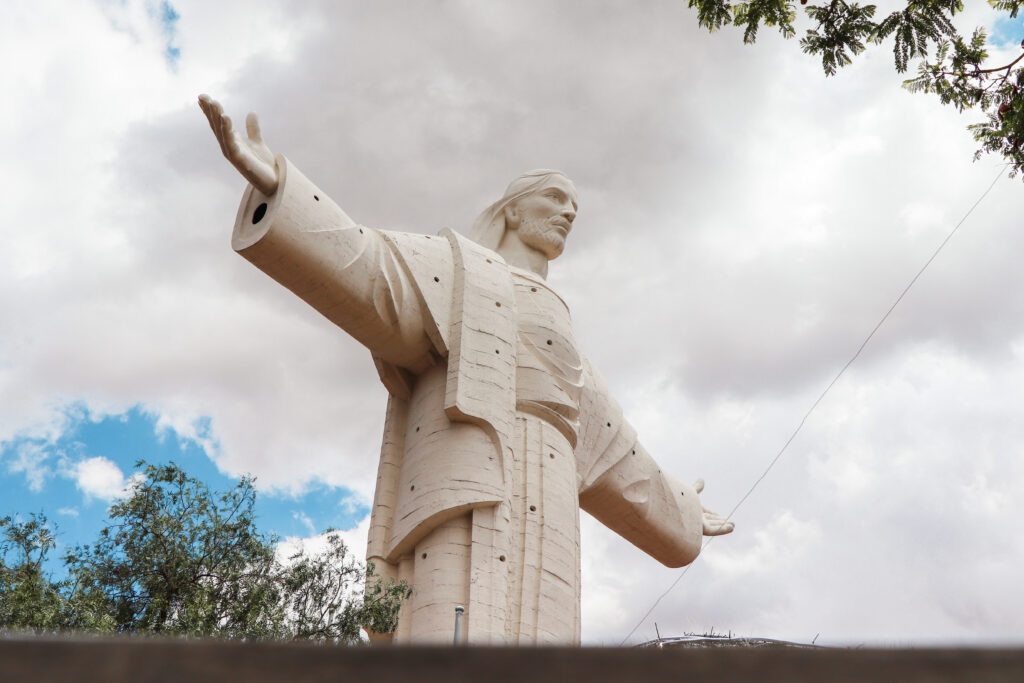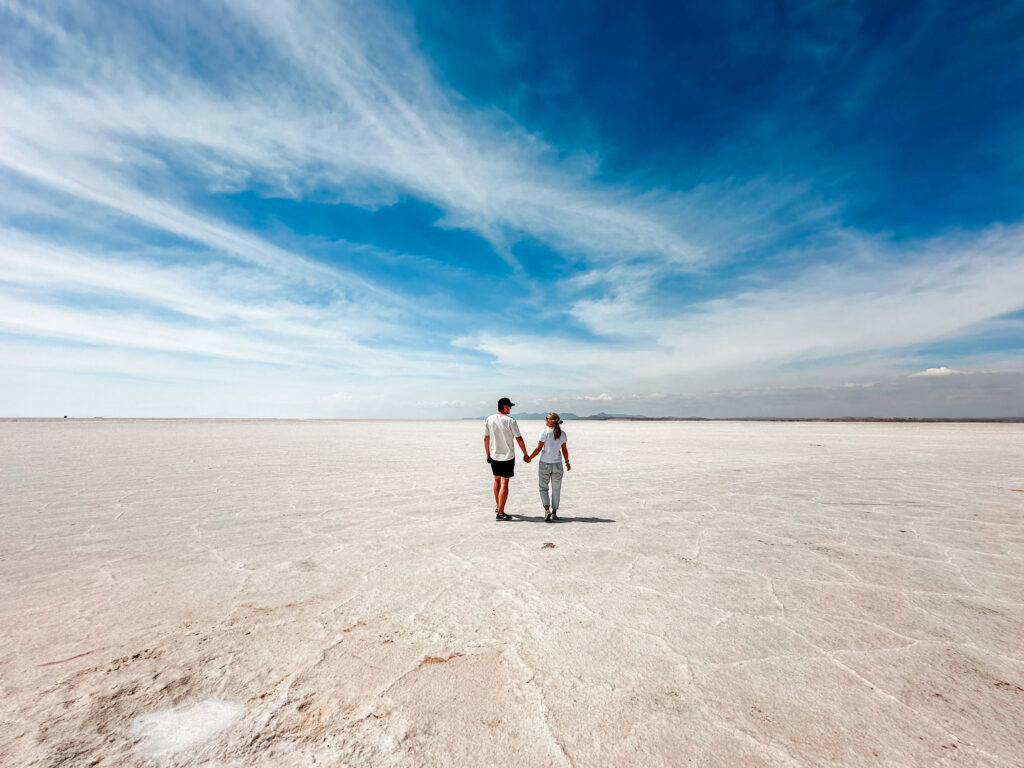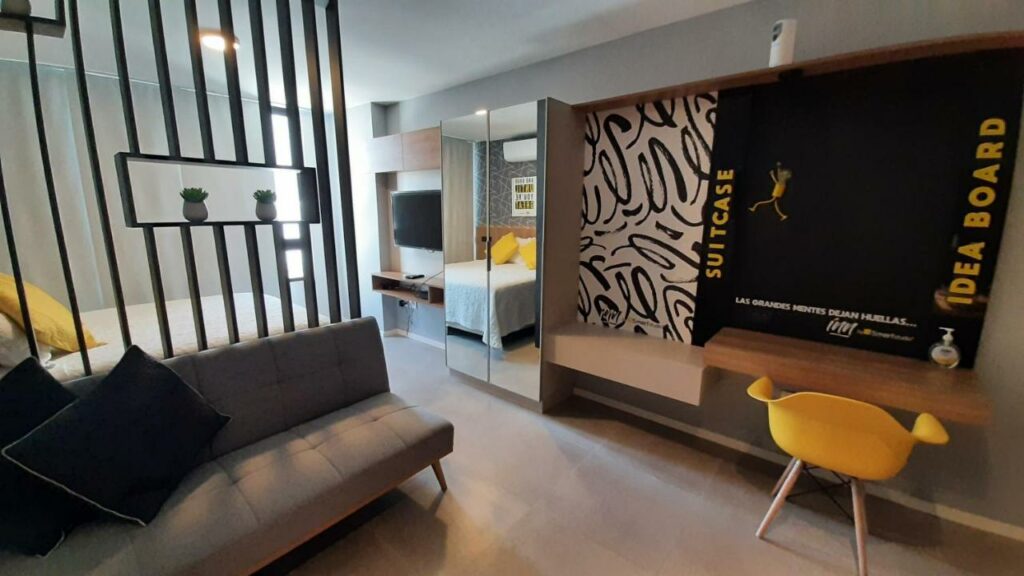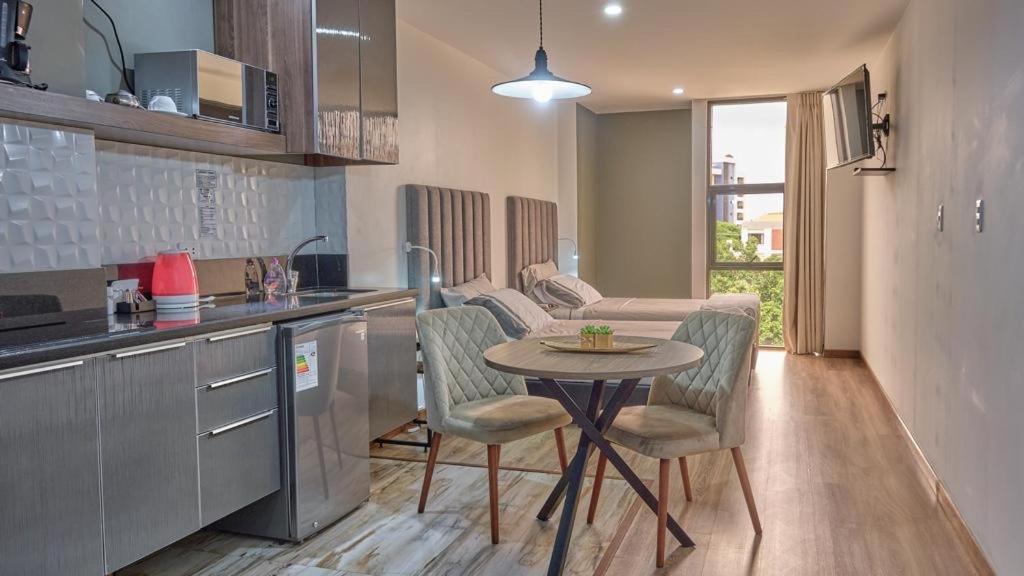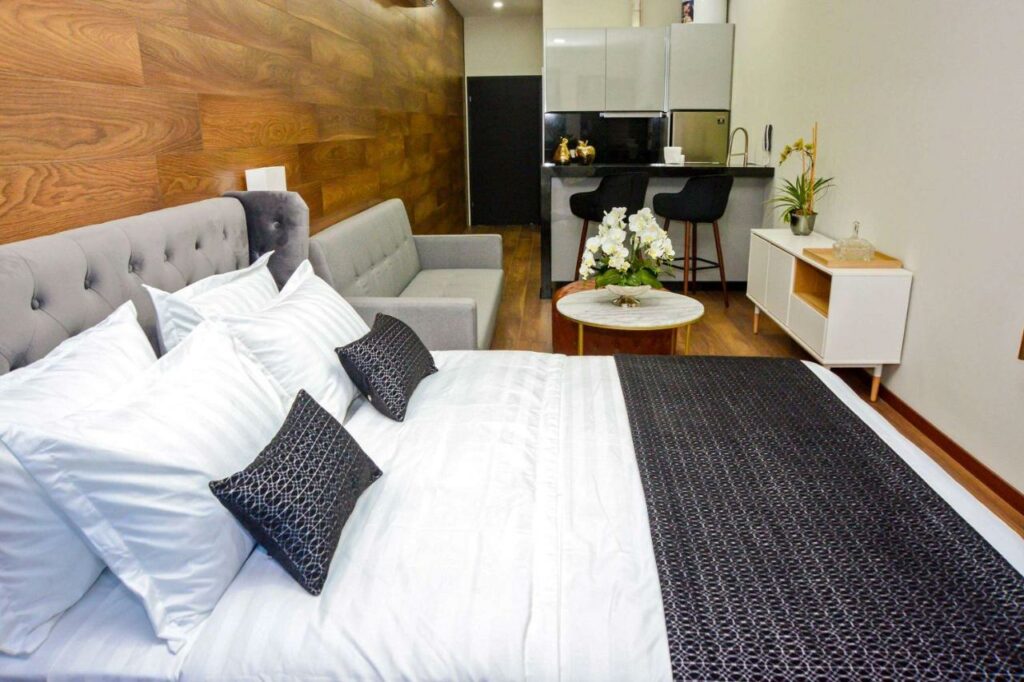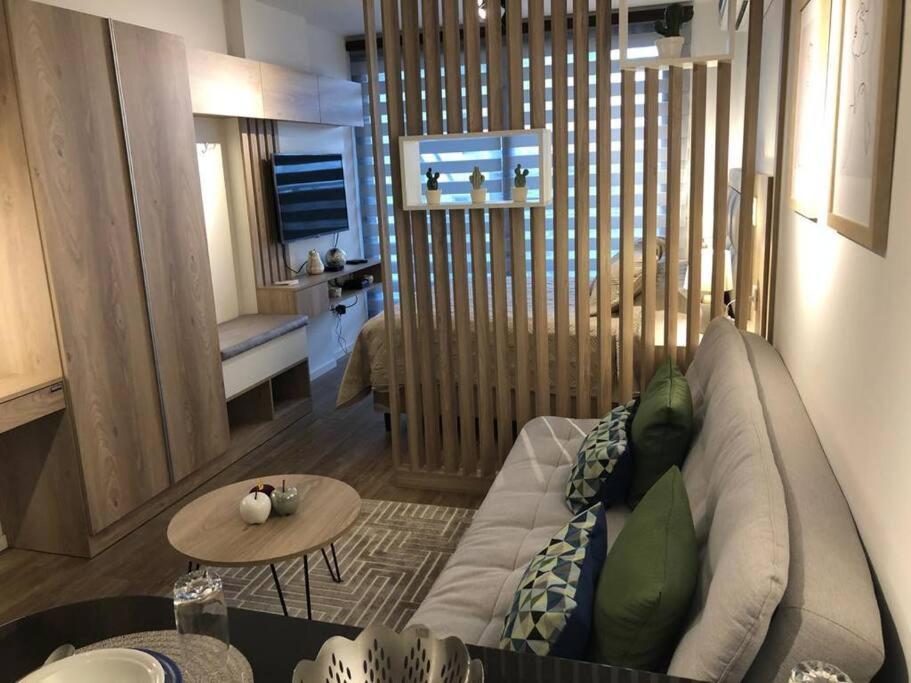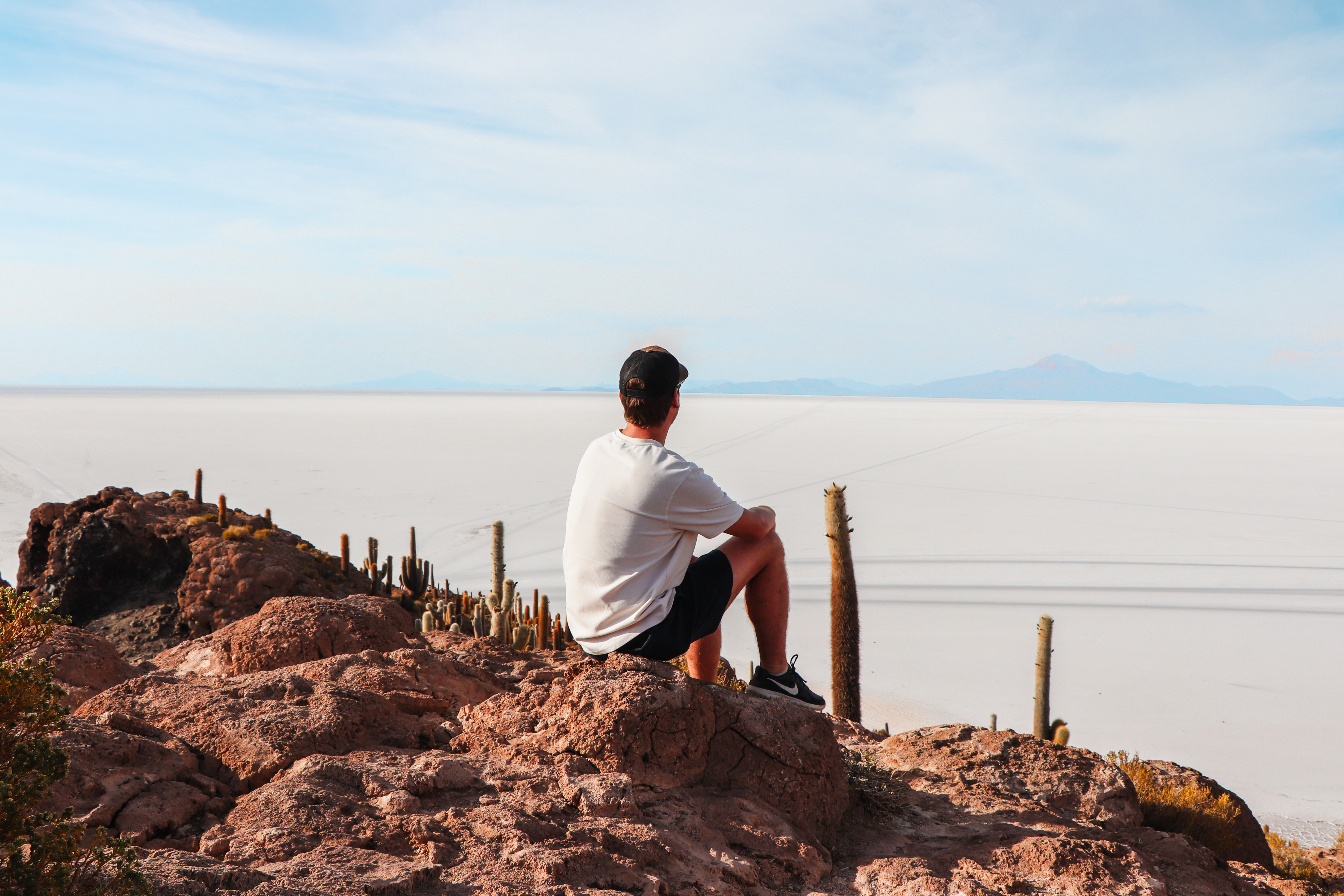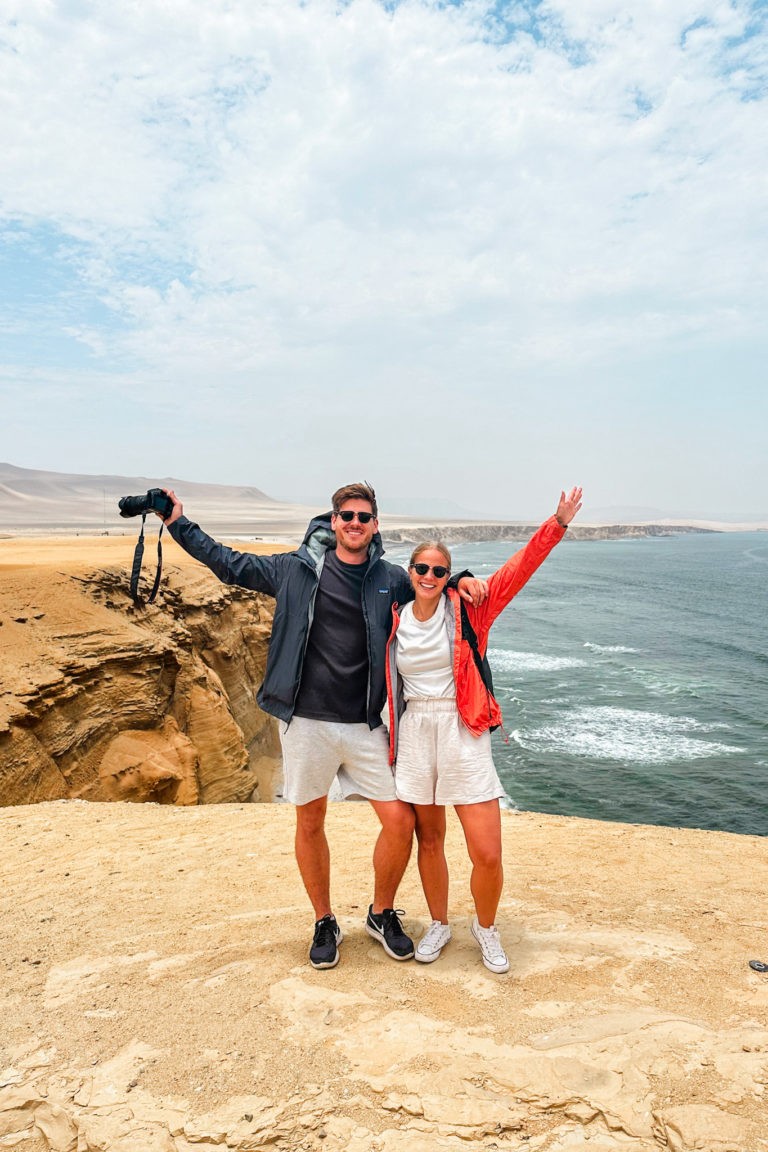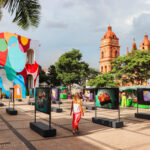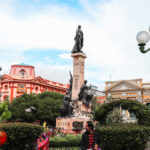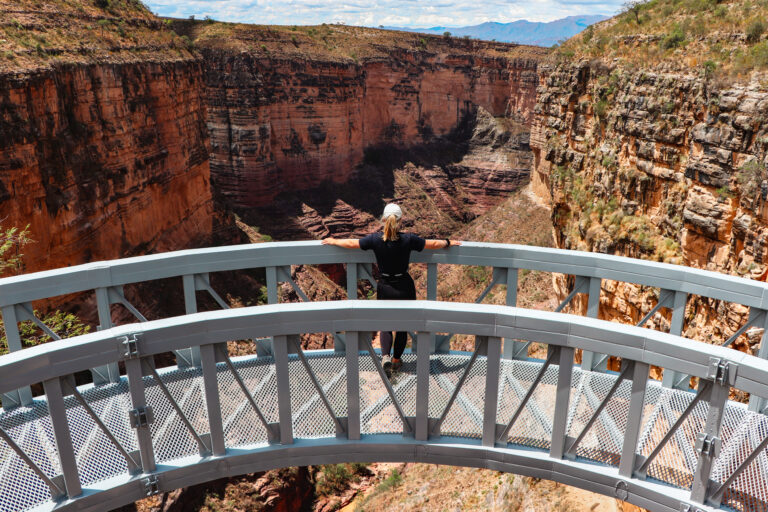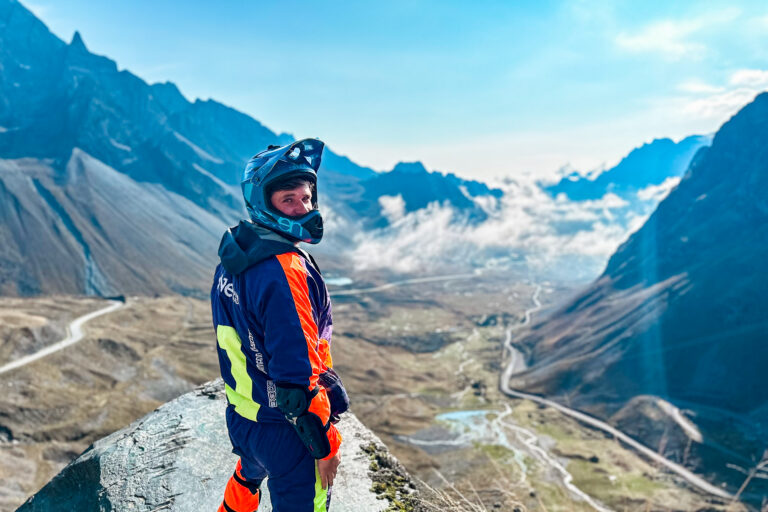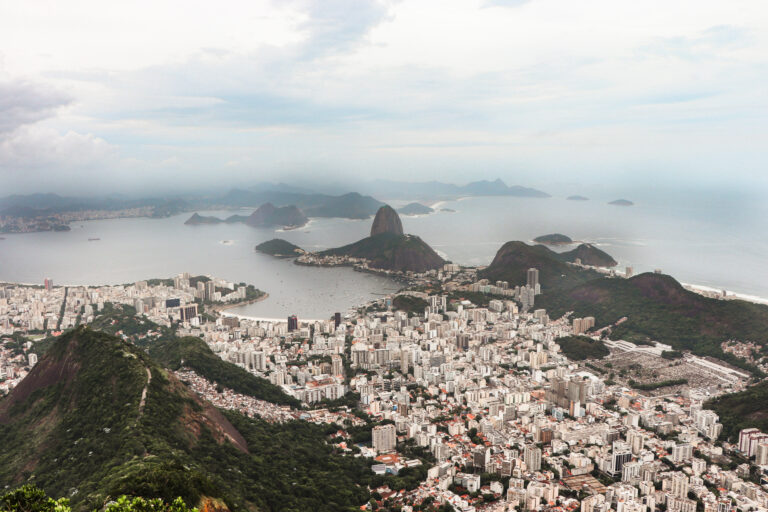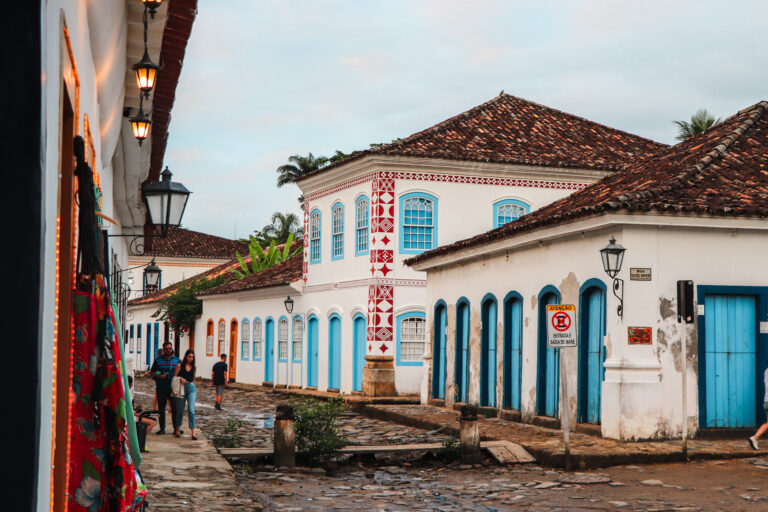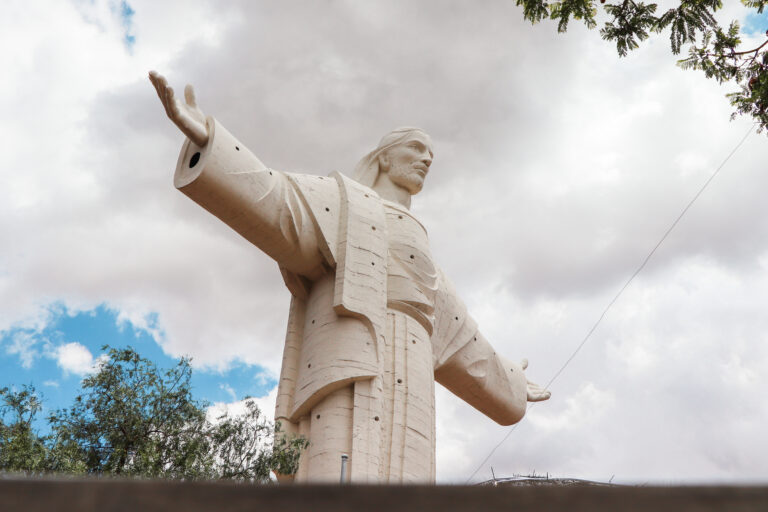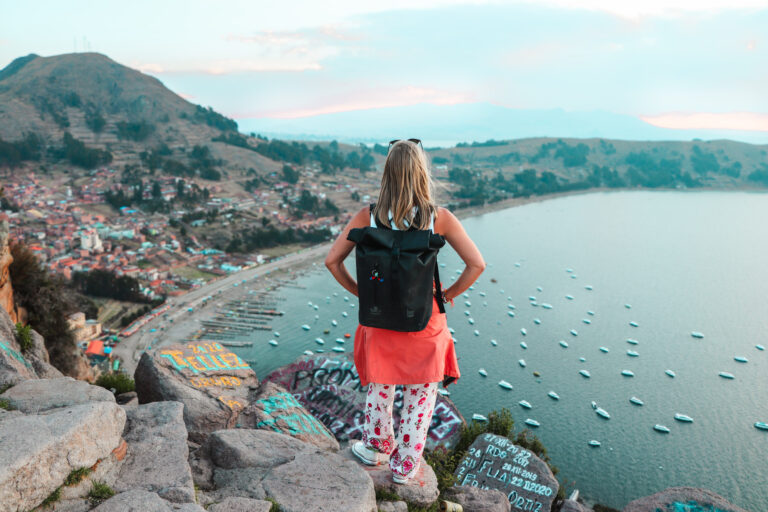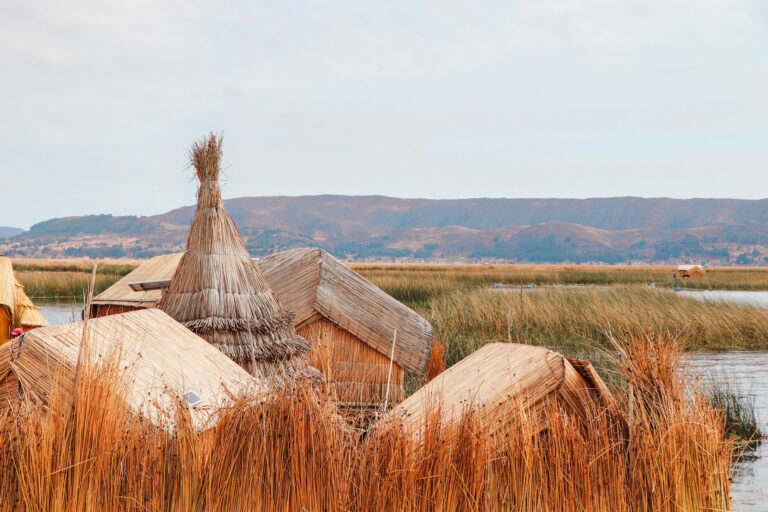Santa Cruz de la Sierra is the largest city in Bolivia, and probably one of the busiest and bubbliest. It’s the country’s economic hub, with tall shiny buildings reaching the sky, quaint markets, and high-class cuisine. Situated at only 400 meters (1,312 feet), and neighbor to the Amazon Rainforest, visiting Santa Cruz is a welcoming relief to everyone looking for big city vibes, pleasant temperatures, and plenty of nature next door.
Spend two to three days in Santa Cruz de la Sierra to explore all of the city’s best attractions.

11 Best Things to Do in Santa Cruz de la Sierra
Arriving in Santa Cruz was like a homecoming for us. It was the last stop, after traveling through Bolivia for over a month and before flying to Brazil. After sleeping in basic rooms and eating fried food for too long, we found ourselves in a nice apartment, enjoying healthy food, and some relaxing days in the city. And Santa Cruz didn’t disappoint.
Once we refueled our batteries by doing nothing for a day or two, we were so ready to explore the city.
1. Explore Santa Cruz’s center at Plaza 24 de Septiembre
If you’ve followed us along our journey, you already know that exploring a city in South America is best to start at the main Plaza. The Plaza 24 de Septiembre in Santa Cruz is the downtown square and the social gathering place among locals and tourists. It’s best to start your city trip here and navigate your way to all of the city sights.
The Plaza 24 de Septiembre is a large and nicely decorated city square, with gorgeous plants, tall palm trees, and indigenous statues. It’s a perfect place to catch the vibes of the locals, sit on one of the benches in the shade, and watch people pass by the impressive Cathedral of Santa Cruz.
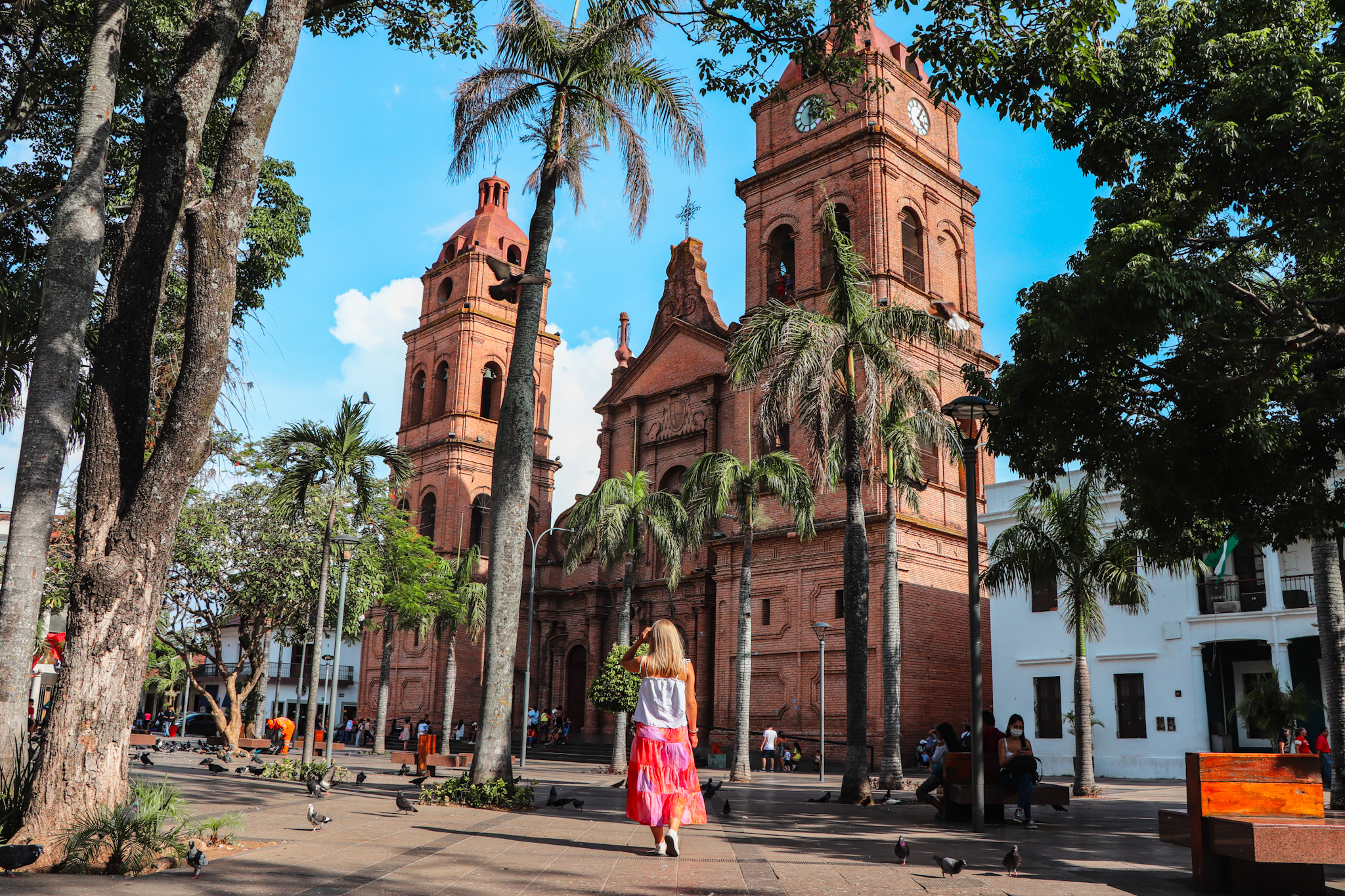
2. Visit the Cathedral of Santa Cruz (Cathedral Basilica of St. Lawrence)
The cathedral is the main Catholic church in Santa Cruz and is said to be one of the best places to visit in the city center.
We found the inside of the church rather underwhelming, maybe because there weren’t many decorations. What we liked, however, was climbing the small spiral staircase atop the bell tower. Once we made our way up, we were greeted with an almost panoramic view over the main square. The only thing that held us back, was the metal mesh protected windows and the almost hurricane-strong winds. Well, now that we think of it, maybe this was the reason why they have installed these prison-like windows. Nonetheless, we had great fun.
The Cathedral of Santa Cruz (Cathedral Basilica of St. Lawrence) is free to enter and open every day from 8 a.m. – 12 p.m. and 3 p.m. – 6 p.m. The entrance to the bell tower costs as little as 3 BOB (≈ 0 USD) and follows the same opening time. The cathedral is right next to the Plaza 24 de Septiembre and can be reached by taking a taxi (better Uber), or collectivo from your city accommodation.



3. Walk by the Manzana Uno Espacio de Arte
Once you’ve done exploring the Plaza and Cathedral, walk around the right side of the Cathedral of Santa Cruz to find the Manzana Uno Espacio de Arte. Here, you’ll find a public art exhibition and a small market to enjoy. The art gallery is run by a volunteer team of artists and promotes a variety of artistic expressions, such as paintings, sculptures, and photography. On the market, you can shop for some local art and support the distinct art scene of Santa Cruz.
There is no entrance fee for visiting the Manzana Uno Espacio de Arte. You can shop for some local art, sit by a nice little coffee inside the gallery, and watch the current exhibition. The Manzana Uno Espacio is right around the corner of the Plaza 24 de Septiembre, the main square in Santa Cruz.
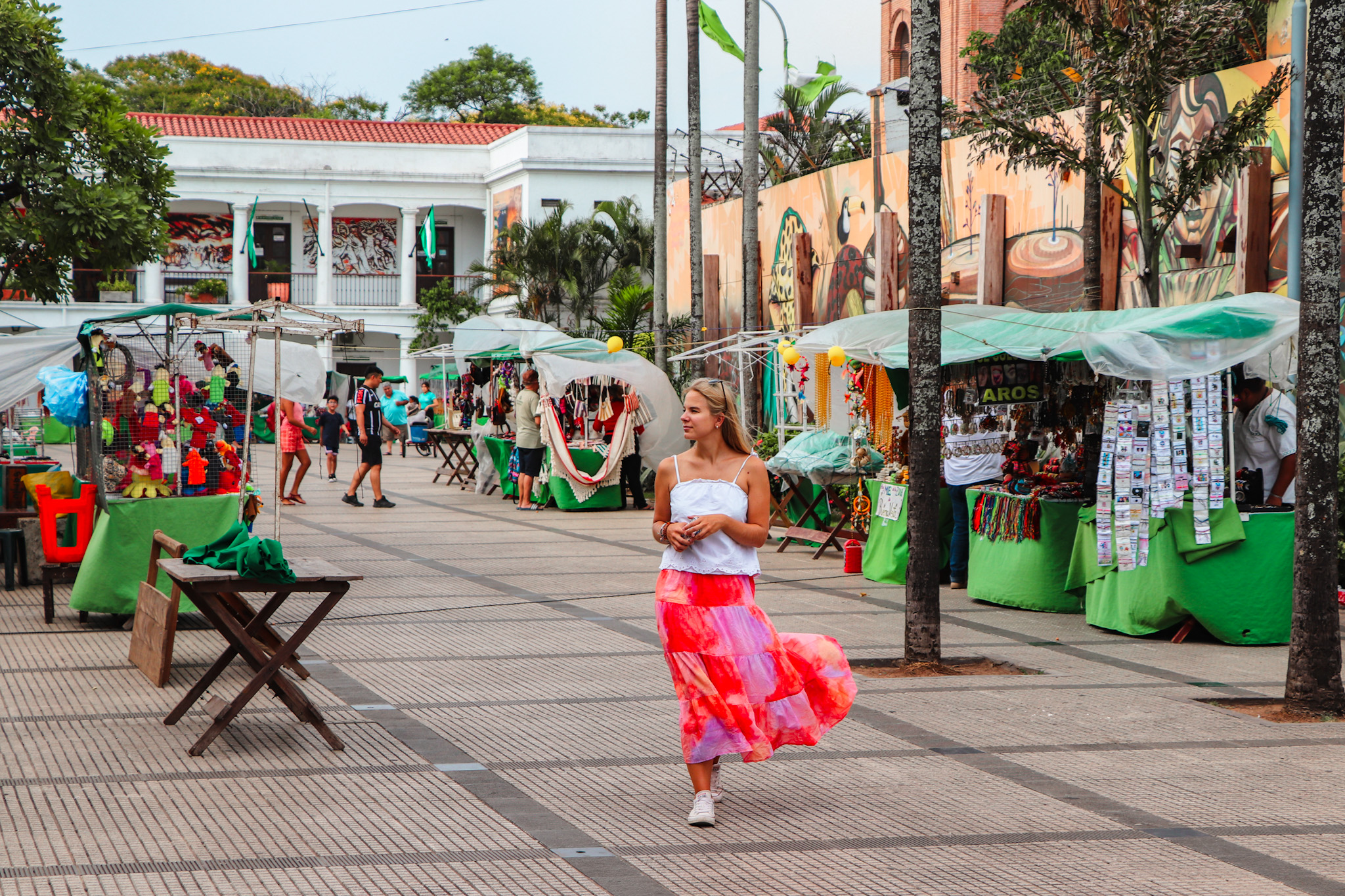
4. Experience the craziness of the local markets
If the small market around the church wasn’t something for you, you could head to the Los Pozos Market near the Pareque el Arenal. The Los Pozos market is one of the busiest and most popular markets in town. Here, you can make some bargains, and buy clothing, fresh fruit, or fresh meat. Because of the latter, be prepared for some special odors.
The Los Pozos Market is open every day and is located at the border of Santa Cruz’s center (Distrito 11). Because of that, it’s best to take a taxi (or better: Uber). Expect the market to be really busy throughout the day.

5. Dive into Bolivian Art and Culture at Melchor Pinto House Cultural Center
Only a few meters from the Plaza 24 de Septiembre is the Melchor Pinto Cultural Center, a beautiful art gallery hidden behind a cozy café. This house once belonged to Melchor Pinto Parada, a prominent Bolivian figure for his extraordinary service to his hometown of Santa Cruz de la Sierra. Today, it is a calm and quiet place in the heart of the city center and a perfect place to grab a coffee in the courtyard and stroll through the public gallery.
The Melchor Pinto House is on Sucre Street, close to the city’s main square and a short walk away. We loved the relaxed atmosphere of this place a lot, as we liked the art. So, if you’re in the vicinity of the center, definitely swing by this cool place. Entrance is free and some exhibits are for sale, in case you are looking for local art.

6. Walk to the center of South America at Plaza Calleja
Santa Cruz is the center of South America. Well, at least that is what we heard from the Crucenos, the local people living in Santa Cruz. But the truth is, it is not – with a little bit of detective work, you will find a little sign that denotes this place as “the poetical heart of South America”. What we liked about this place, however, were the kilometer signs that display the distances to other world cities.
The supposed center of South America is marked with a big cross on the Plaza Calleja (Plazuela Calleja). It takes a 20-minute walk from the center to get there, but you can also hop on a taxi in the city center. It’s nothing special, and we’d even say that it’s overrated, but at least it is a good excuse to get to walk around and explore the streets of Santa Cruz.
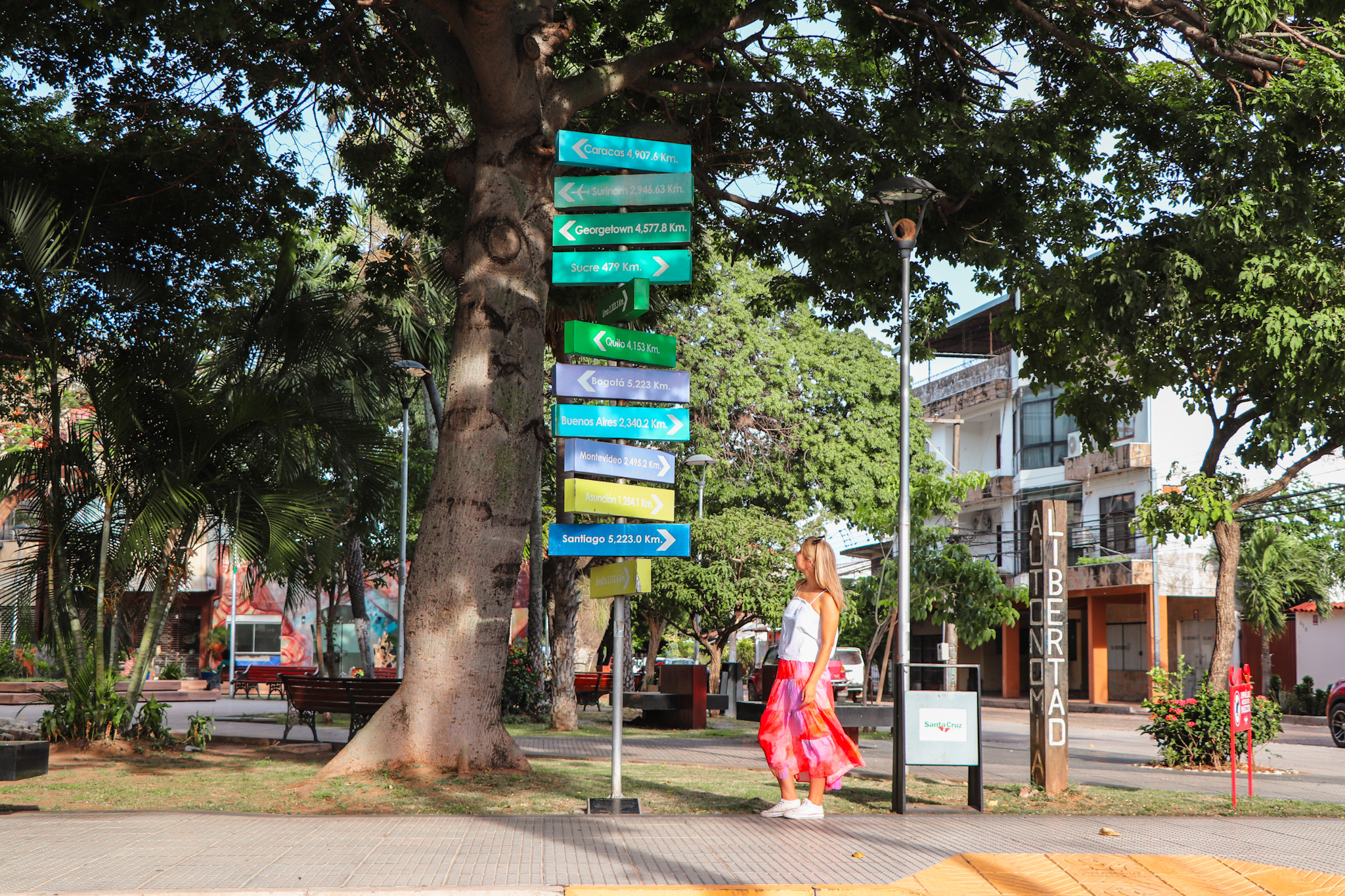
7. Look for sloths in the Botanical Garden of Santa Cruz
Usually, sloths thrive in the lush lowland tropical forests. We have seen sloths living in the wild, when we traveled to Iquitos, a city midst of the Peruvian rainforest, to spend 4 days in the Amazon rainforest. But you don’t have to travel that far to see the cutest mammals in action.
Relevant Reading
The Botanical Garden in Santa Cruz is a good place to see sloths in the trees. It may be hard to spot them, as they spend most of their lives sleeping, but even if you don’t get the chance, there’s plenty to see in the park. You can definitely count on seeing some active monkeys, giant turtles, plenty of butterflies, and colorful birds. After all, nothing is guaranteed, but that’s the charm of a park where animals are not cages and can live wild.
With over 146 hectares full of lively flora and fauna and more than 6 km (4 miles) of hiking trails, the Botanical Garden is a good activity to respite from the bustling streets of Santa Cruz. Plan to spend at least half a day there. Also, make sure to bring some food with you, as there are not many options to eat. The entrance to the Botanical Garden costs 10 BOB (≈ 2 USD) and the park is open every day from 7 a.m. to 4 p.m.

8. Discover Bolivia’s biodiversity at Biocenter Güembe Mariposario
The Biocenter Güembe Mariposario is an ecological park close to the center of Santa Cruz. It has the largest aviary and butterfly enclosure in Bolivia. Both of them are huge with hundreds of tropical birds and thousands of colorful butterflies flying around. You can also choose to go kayaking, cool down in their pools, or choose to spend the night in one of the park’s huts. Visiting the center is a great way to see wildlife in the city in case you are not planning to go on a tour to the Amboro National Park or visit the Botanical Gardens.
The Biocenter Güembe Mariposario opens its gates Tuesday to Sunday from 10:30 a.m. to 6:30 p.m. and the entrance costs 140 BOB (≈ 21 USD). It is quite close to Santa Cruz, and it takes you around 15 minutes to get there from the city center. Unlike the Botanical Gardens, don’t bring outside food or drinks, as they are not allowed in the park.

9. Tour to Amboro National Park
If visiting the Biocenter or Botanical Garden wasn’t enough, then a tour of the Amboro National Park definitely is. The great thing about Santa Cruz is that the city is a neighbor to the Amazon Rainforest. This makes it a great destination for some serious rainforest expeditions, and a hiking trip in the Amboro National Park is one of them.
Relevant Reading
The Amboro National Park is 40 km (25 miles) away from Santa Cruz and can be accessed from the northern and southern sides. While the northern part is more jungly and comes close to what one would expect from a rainforest, the southern part offers great views from the Refugio Los Volcanoes.
Planning to hike the Amboro National Park requires you to have a guide (or “local companion”). Tours from Santa Cruz cost between 520 BOB (≈ 78 USD) and 830 BOB (≈ 125 USD) per day, depending on the length of your trip.
10. Spend a weekend in Samaipata
Samaipata offers lovely landscapes, old-world charm, and tranquility. It is a quaint village off the beaten paths not far from Santa Cruz and a great place to escape the hustle and bustle of the city. Locals often call Samaipata “the little Switzerland of Bolivia”, because of its beautiful streets and buildings with a mountain backdrop.
The city had a different atmosphere compared to all of the other cities we visited during our travels through Bolivia. It’s laid-back, Bohemian, and super chilled. People meet at the few bars to play games, chat, and have fun. When we went for dinner the other day, we made friends with the villagers, drank a couple of beers, and joined them for a round of Jenga.

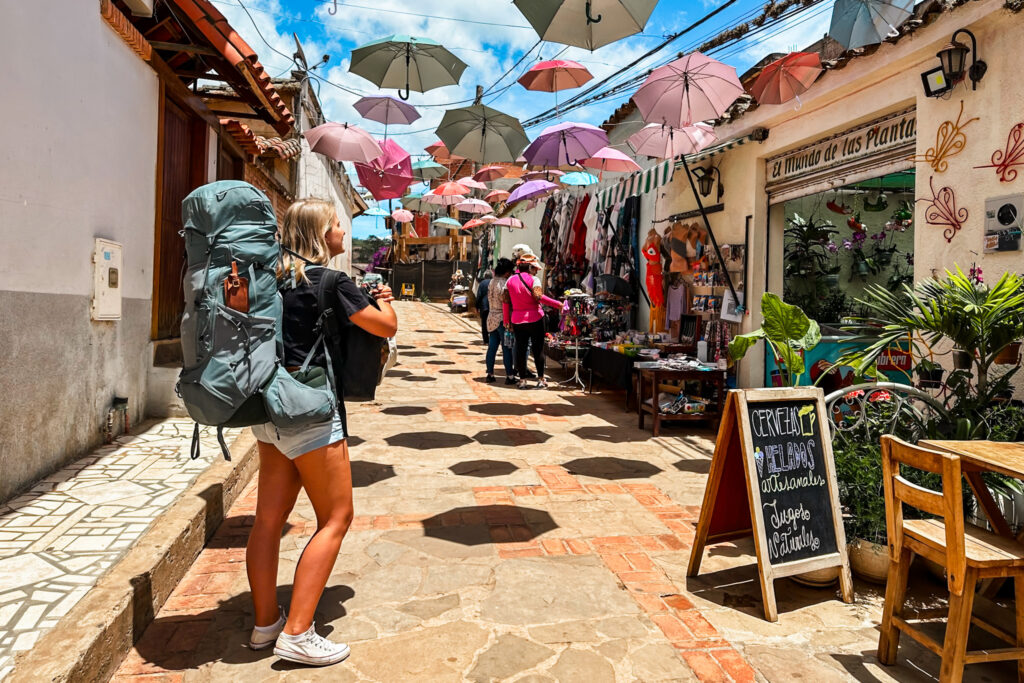
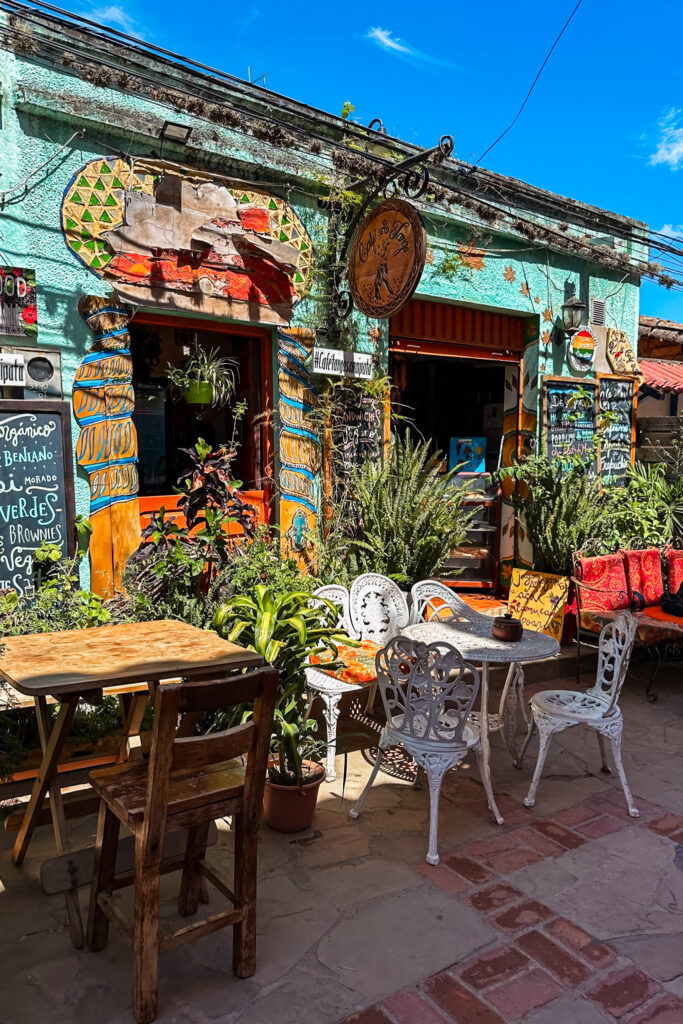
In Samaipata there are also a few cool things to do. You can visit the El Fuerte de Samaipata Ruins, and the Las Cuevas Waterfalls or plan your trip to the Amboro National Park.
Plan to spend a few days in Samaipata to break from the busy streets of Santa Cruz and enjoy the tranquility of nature. Collectivos from Santa Cruz to Samaipata leave from the intersection of Avenida Omar Chavez Ortiz and Soliz de Olguin. The trip costs between 30 BOB (≈ 5 USD) to 40 BOB (≈ 6 USD) and takes around 3 hours.
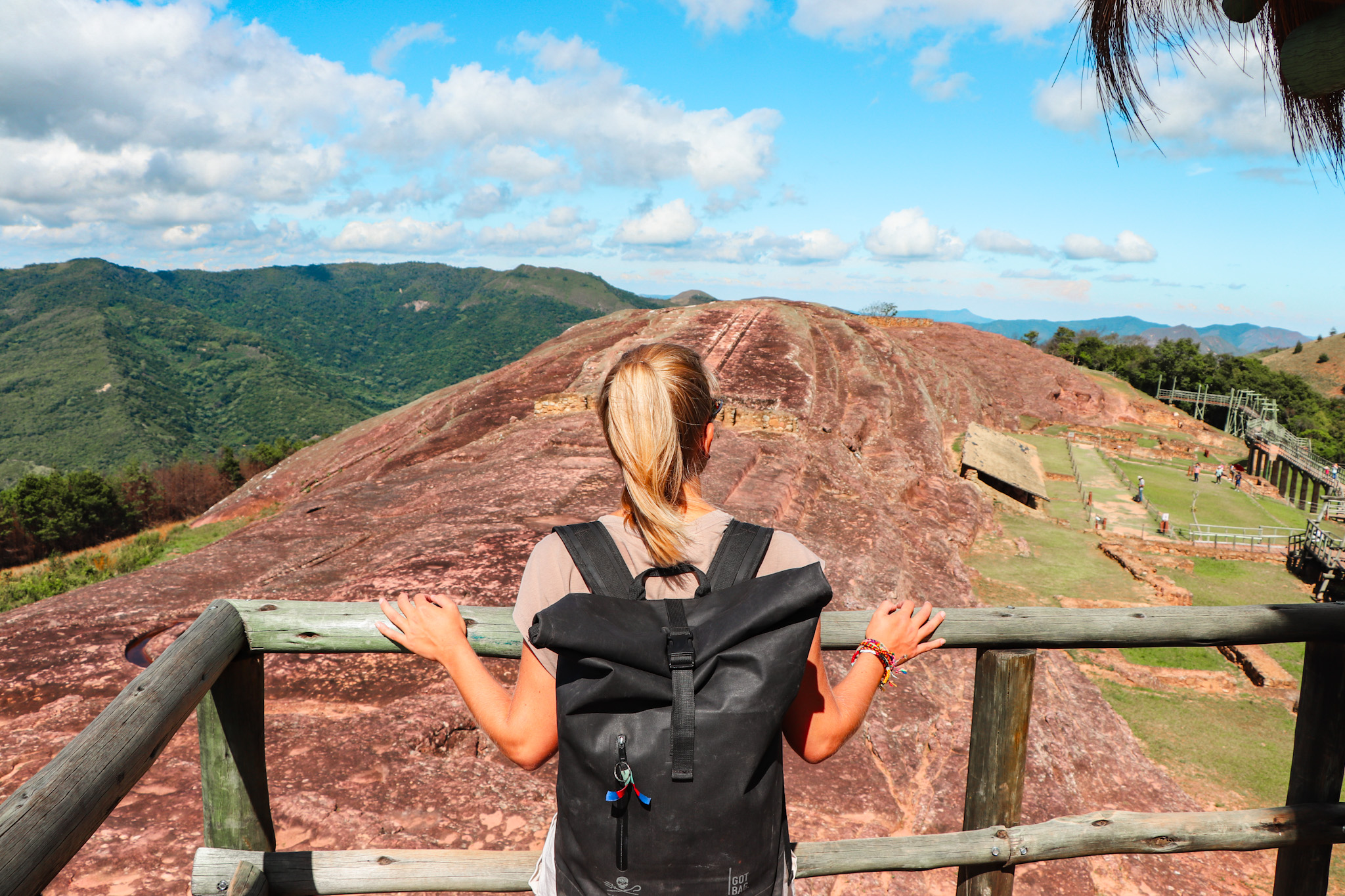
11. Sandboard down the dunes of Parque Lomas de Arena
Parque Lomas de Arena is a beautiful yet rarely visited regional park 25 km (16 miles) outside Santa Cruz. The park’s main attractions are the never-ending dunes that are surrounded by lush forests and lively nature. Sandboarding down the steep slopes of the dunes is the thing why people come to this place.
It’s cool to see how the landscapes quickly change once you leave Santa Cruz. Within minutes you have left the hustle and bustle of the city and enter a place that can’t be much different. While you can explore this place on your own, we’d recommend you book a half-day trip from Santa Cruz.
We had a great time sandboarding when we were in Huacachina, Peru, so we skipped this one. But if you haven’t tried sandboarding before, we would hundred percent give it a shot here.
Relevant Reading
Tours from Santa Cruz pick you up from your hotel and leave twice a day. You can sandboard year-round, however, if there’s a lot of wind or generally bad weather it can happen that tours are canceled. Expect to pay around 1000 BOB (≈ 150 USD) for a half-day tour, which includes the park entrance fee of 20 BOB (≈ 3 USD), snacks and drinks, an English-speaking guide, and a sandboard.
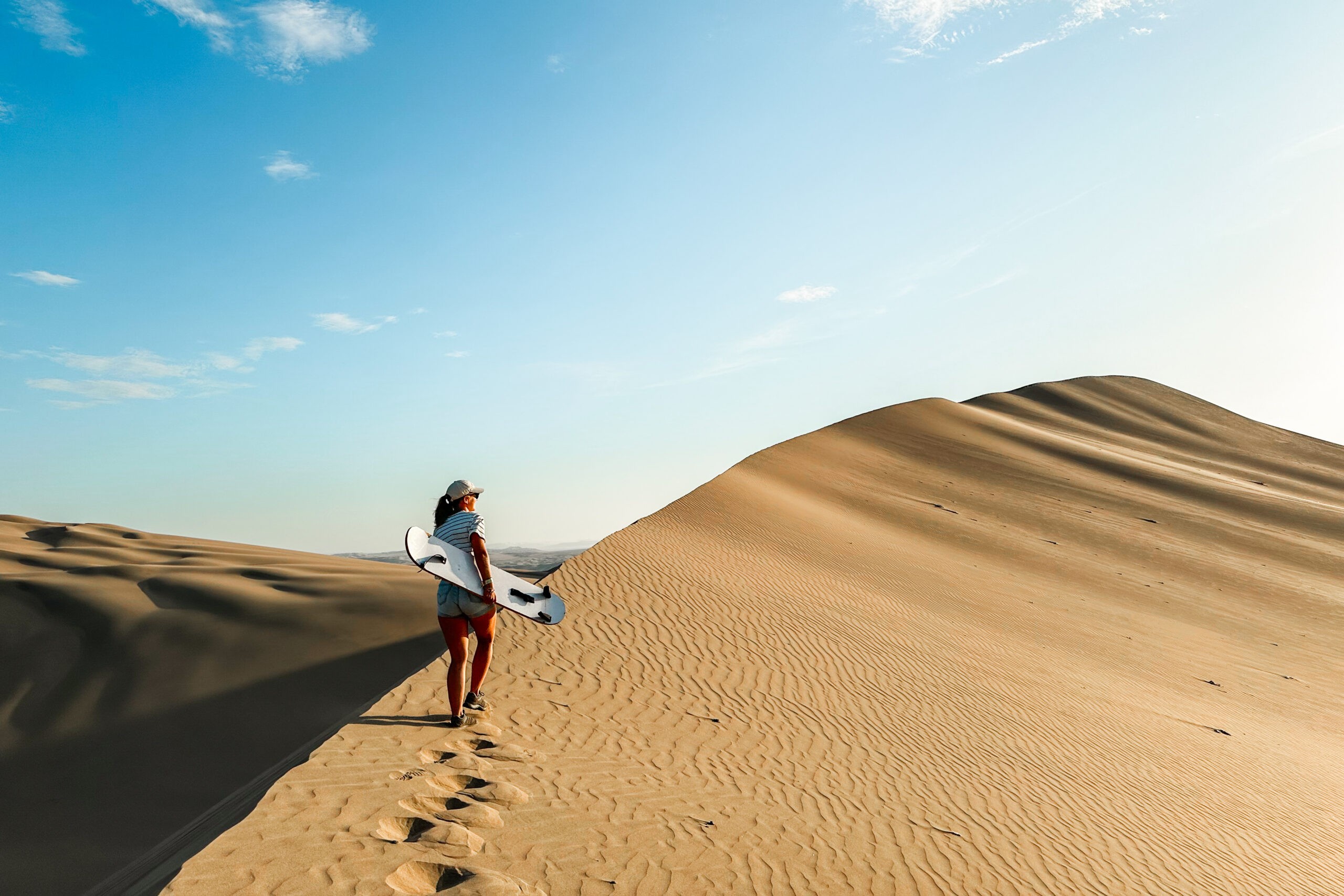
How to get to Santa Cruz de la Sierra?
Santa Cruz is a commonly visited city among backpackers traveling to Bolivia, but that is rarely of choice. Most travelers pass by Santa Cruz because of its airport and see the city as a connection point between their travels across South America. But, after reading about all of Santa Cruz’s things to do, you may see that there is actually more to the city than meets the eye.
To make crafting your Bolivia itinerary a little easier, let’s discuss how to best get to Santa Cruz de la Sierra from all of the major Bolivian cities.
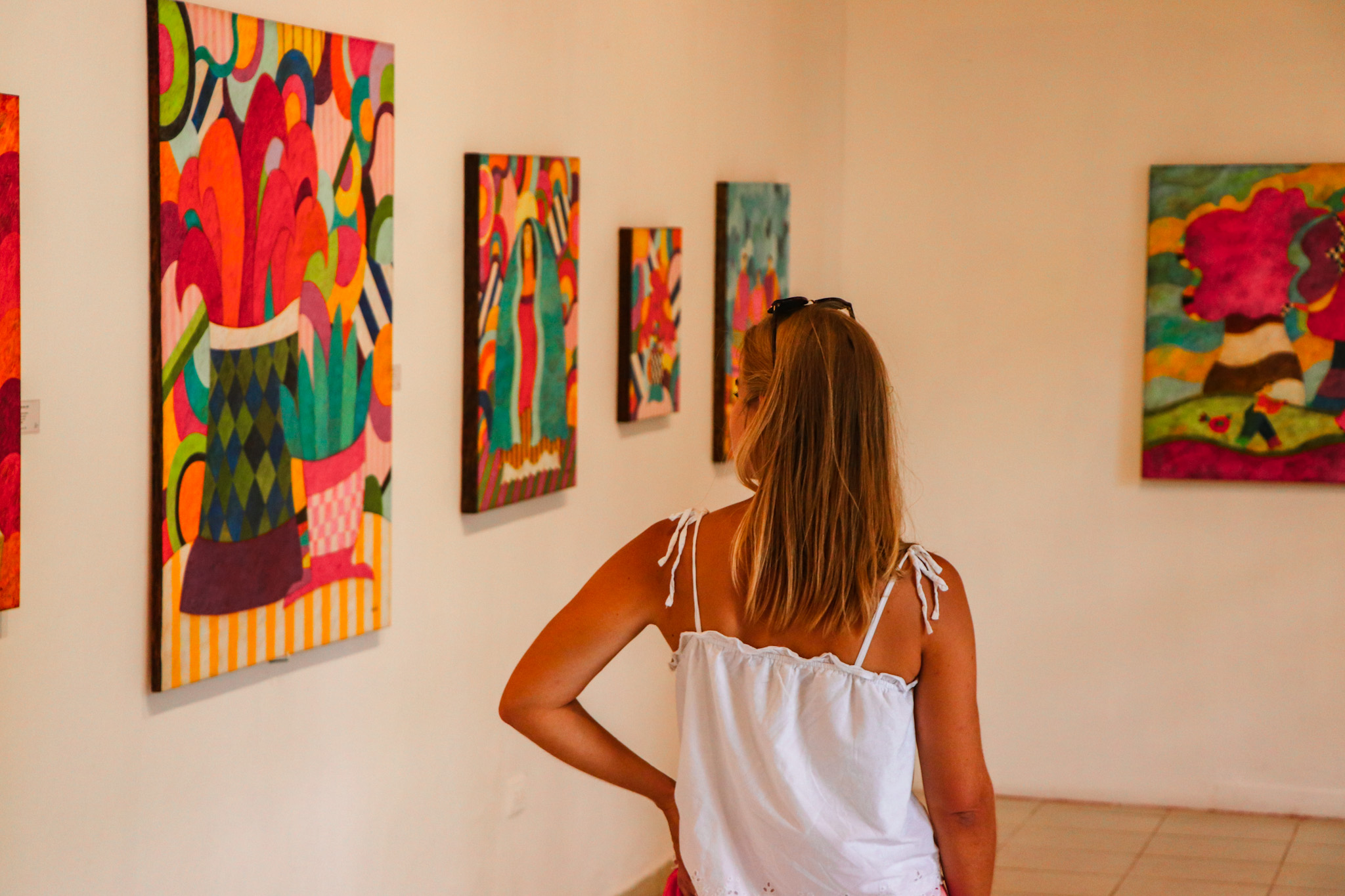
From La Paz to Santa Cruz de la Sierra
Unlike Sucre and La Paz, Santa Cruz is no capital city. But because of its size as the largest Bolivia city, it’s well-connected nationally and internationally. The best way to get to Santa Cruz from La Paz is by plane. And while buses operate between La Paz and Santa Cruz, we do not recommend you hop on a 16-hour-ride.
Several planes leave La Paz daily for a 1-hour non-stop flight to Santa Cruz. Tickets cost around 365 BOB (≈ 55 USD) for one way. You can compare the current flight prices here.
Relevant Reading
From Sucre to Santa Cruz de la Sierra
You can get from Sucre to Santa Cruz by either hopping on a 12-hours bus ride or by taking a plane. Both are viable options.
We chose to hop on the bus at the Terminal de Buses Sucre and asked to be dropped off halfway in Samaipata, as we were planning to spend some relaxed days in this beautiful little village off the beaten paths.
The bus ticket from Sucre to Santa Cruz costs around 200 BOB (≈ 30 USD), depending on the bus company you choose. We highly recommend you take Trans Copacabana, as we traveled with 6 de Octubre and our bus broke down several times. We then switched buses along the way and ended up paying double the price.
The plane departs from the Sucre Alcantari Airport (SRE) multiple times a day. Expect to pay around 225 BOB (≈ 34 USD) for a one-way ticket to Santa Cruz. The flight takes around 45 minutes and is a good option if you don’t want to spend the night on the bus. Plus, flying in Bolivia is super cheap. So, most of the time, choosing the convenience of a plane over a long bus ride is worth the extra few bucks. You can compare the current flight prices here.
Relevant Reading
From Cochabamba to Santa Cruz
From Cochabamba, you can either fly directly to Santa Cruz or take the bus.
After we visited Cochabamba, we first traveled to Uyuni and Sucre before we headed to Santa Cruz. If you have been to those places already, then taking the plane from Cochabamba to Santa Cruz would be your best option. Both cities are directly connected, which limits your travel time to a quick 50-minute and 270 BOB (≈ 41 USD) flight.
Alternatively, you also have the option to take a bus ride for around 135 BOB (≈ 20 USD). All buses are overnight buses and leave Cochabamba from the Terminal de Buses here. The ride will take 10 hours until you arrive in Santa Cruz. You can check the current bus schedules and book your ticket here.
Relevant Reading
From Uyuni to Santa Cruz de la Sierra
If you visit the famous Salt Flats in Uyuni and want to travel to Santa Cruz afterward, doing it step-by-step is your best option.
Flights from Uyuni to Santa Cruz take around 5 hours, including a 3-hour long overlay in La Paz, and cost around 1100 BOB (≈ 165 USD), which is quite expensive. If you’d like to compare your flight options, you can check out the schedules and prices here. As all flights from Uyuni to Santa Cruz have a long stopover in La Paz, consider spending a couple of days in this Bolivia’s weirdest city.
Taking the bus from Uyuni transits you via Sucre, the constitutional capital of Bolivia. Sucre is the birthplace of the country’s independence, and a real eye-catcher when it comes to white-washed colonial buildings. Why not plan to spend two days in Sucre, before you continue your travels to Santa Cruz? For us, Sucre was a clear must-visit destination.
The bus from Uyuni to Santa Cruz takes around 8 hours to Sucre, plus an additional 12 hours from Sucre to Santa Cruz. Both tickets combined cost you around 220 BOB (≈ 33 USD). But you definitely don’t want to take both rides end-to-end.
Relevant Reading
Where to stay in Santa Cruz de la Sierra?
For travelers looking to explore all of the best things to do in Santa Cruz de la Sierra, the best district to consider is Equipetrol. It’s the area we stayed – central, safe, and close to most of the city’s attractions. There are a lot of great restaurants, good bars, grocery stores and shopping malls.
Compared to other cities in Bolivia, Santa Cruz is huge, with lots of busy streets and some pretty skyscrapers you wouldn’t find anywhere else in the country. But this also means, that it takes time to get around the city (especially when experiencing the typical Bolivian traffic). So, staying in an area that has most of the things you need in walking distance is a big plus.
Here are our accommodation picks for Santa Cruz de la Sierra, alongside the place we stayed, a budget and luxury alternative.
Where to eat in Santa Cruz de la Sierra?
You read it already. Santa Cruz has a lot to offer. And one thing that we loved specifically, were the restaurants. In Santa Cruz, you’ll get everything your palate may crave for. We devoured the best pizza in a cozy Italian trattoria and tasted some delicious chicken roulades and Vietnamese steamed bon bao buns in an exquisite restaurant. Whatever Western meal you are looking for, we’re pretty you find it in Santa Cruz.
Though prices for food in Santa Cruz are higher and not comparable to the rest of the country. To shorten your time skimming through all of the thousand restaurants in the city, have a look into our recommendations, that were super delicious and didn’t break our backpacker budget.
Cornelia
- International
- Moderate
Cornelia offers exquisite international dishes and a super cozy dining location. It’s not cheap, but it’s worth every penny.
Pizza Bizarra
- Italian
- Moderate
Stone-baked authentic Neapolitan pizza. The staff is super friendly and the food prices are reasonable. Our favorite: Quattro Queso.
El Arriero
- Bolivian
- Expensive
Bolivian Steakhouse, generous portions, and super service. They offer seafood too, but we were desperate for a well-cooked piece of meat.
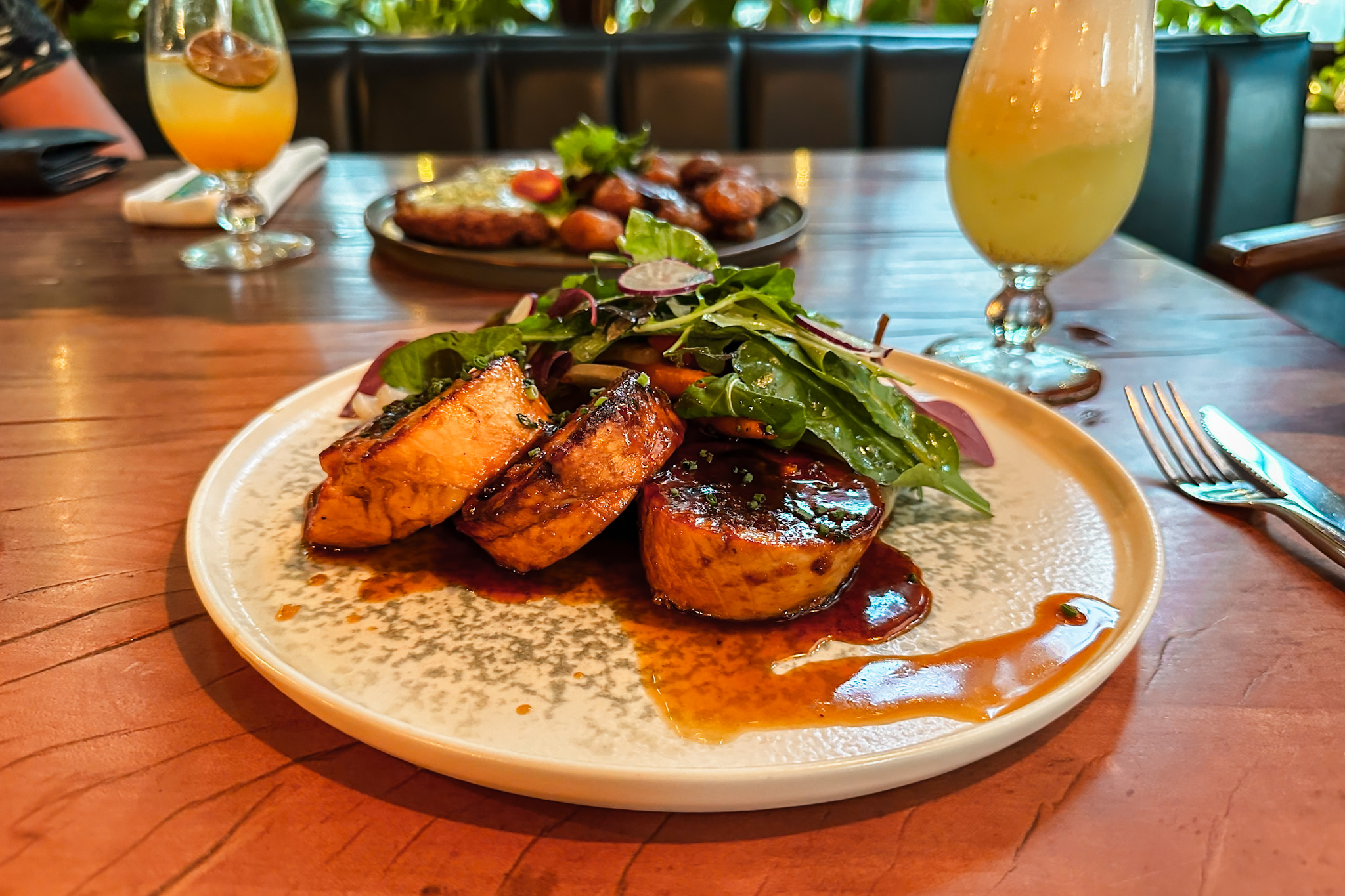
How to get around Santa Cruz de la Sierra?
Getting around Santa Cruz can be time-consuming. But the good news is that many of the city’s main things to do are concentrated in the city center around the Plaza 24 de Septiembre. If you stay in Equipetrol, it’s best to take a taxi or Uber to the center. Fares for taxis are usually metered (look for white taxis) and expect to pay between 20 BOB (≈ 3 USD) to 30 BOB (≈ 5 USD) to get around the central districts.
Santa Cruz also has a public bus system. We didn’t make use of the buses, as the taxi fares were quite affordable and within our budget. But if you want to save some bucks, consider taking a bus from one of the main streets. A ticket costs around 5 BOB (≈ 1 USD) and you pay the driver when to enter. On this page, you can check the current bus schedules and routes in Santa Cruz.

When is the best time to visit Santa Cruz de la Sierra?
Food and activities are not the only things that are pleasant in Santa Cruz, the weather is too. Unlike most Bolivian cities, Santa Cruz de la Sierra isn’t located at breathtaking heights. Because of that, temperatures are warm year-round, which makes it a fantastic destination for everybody seeking sunshine and tropical vibes.
But not all seasons in Santa Cruz are alike. While temperatures are around the 30°C mark, humidity changes a lot – as one would expect from a city next to a rainforest. Therefore, the best time to travel to Santa Cruz is during the dry season from May to October. While visiting the city during the rainy seasons is no showstopper, and understandably most people aren’t only visiting Santa Cruz when in Bolivia, you’ll have fewer rainfalls, thunderstorms, and overall less humidity if you can opt for the dry season.
Here’s when it’s best to visit the city for each month of the year. We visited Santa Cruz in December, which statistically falls into the rainy season, and occasional rainfalls, but still had a great time.
What does it cost to visit Santa Cruz de la Sierra?
Staying in Santa Cruz is more expensive compared to Bolivia’s other big cities. Having said that, we felt it is also more developed. Ultimately, you’ll get what you pay for. When in Santa Cruz, you have plenty of good accommodation options, great restaurants, and lots of shopping options. Therefore, expect to pay a little more. Still, we found its prices affordable and justified. Plus, there are plenty of budget options too.
We spent around 80 USD per day during our stay in Santa Cruz. Take 30 USD as a reference for a budget trip, up to 205 USD if you are seeking more luxury.
Here is our breakdown of the average daily costs, based on our experiences and research.
How many days to stay in Santa Cruz de la Sierra?
Two days in Santa Cruz are sufficient to fully explore all of the best things to do in the city. If you are planning to visit the Amboro National Park or spend some relaxing days in Samaipata, then you’ll need to add a couple more days to your stay.
Spend your first day in Santa Cruz by visiting all of the attractions in the center around the Plaza 24 de Septiembre, such as the Cathedral Basilica of St. Lawrence, the Plaza Calleja, the Manzana Uno Espacio de Arte, and Melchor Pinto House.
On your second day, plan to either go to the Botanical Gardens or visit the Biocenter Güembe Mariposario. While technically you can rush through both in one day, we’d recommend you choose one. Allow yourself some time to relax and treat yourself in one of the nice restaurants in Equipetrol afterward.
If you can spare one more day, plan to visit the Pareque Lomas de Arena and go sandboarding the dunes. Tour providers in Santa Cruz offer a visit to the park as part of a daytrip.
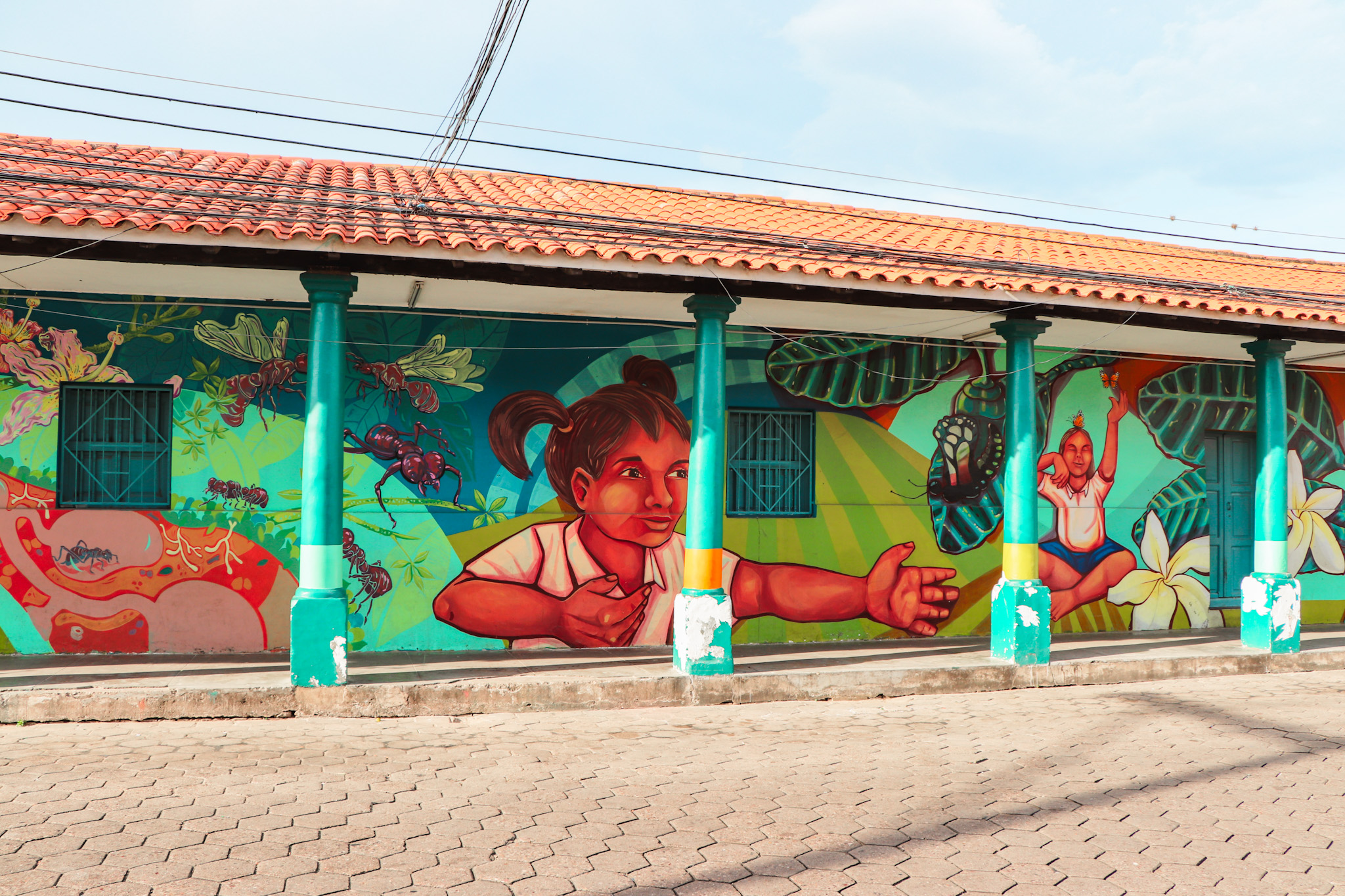
Is Santa Cruz de la Sierra safe to visit?
Compared to other Bolivian cities, statistically, Santa Cruz de la Sierra has a higher crime rate. That may be mostly because it is a big city, but being cautious is always a good habit when traveling. Petty theft, like pickpocketing and bag snatching, is more common in populated spots, such as on the Plazas.
However, we spent more than 6 months backpacking through South America and never had any problems. What can happen in your home country, can also happen to you when you travel. And surely, sometimes chances are higher in some places. But what we can tell from our experience is that bad things mostly happen when people are being careless.
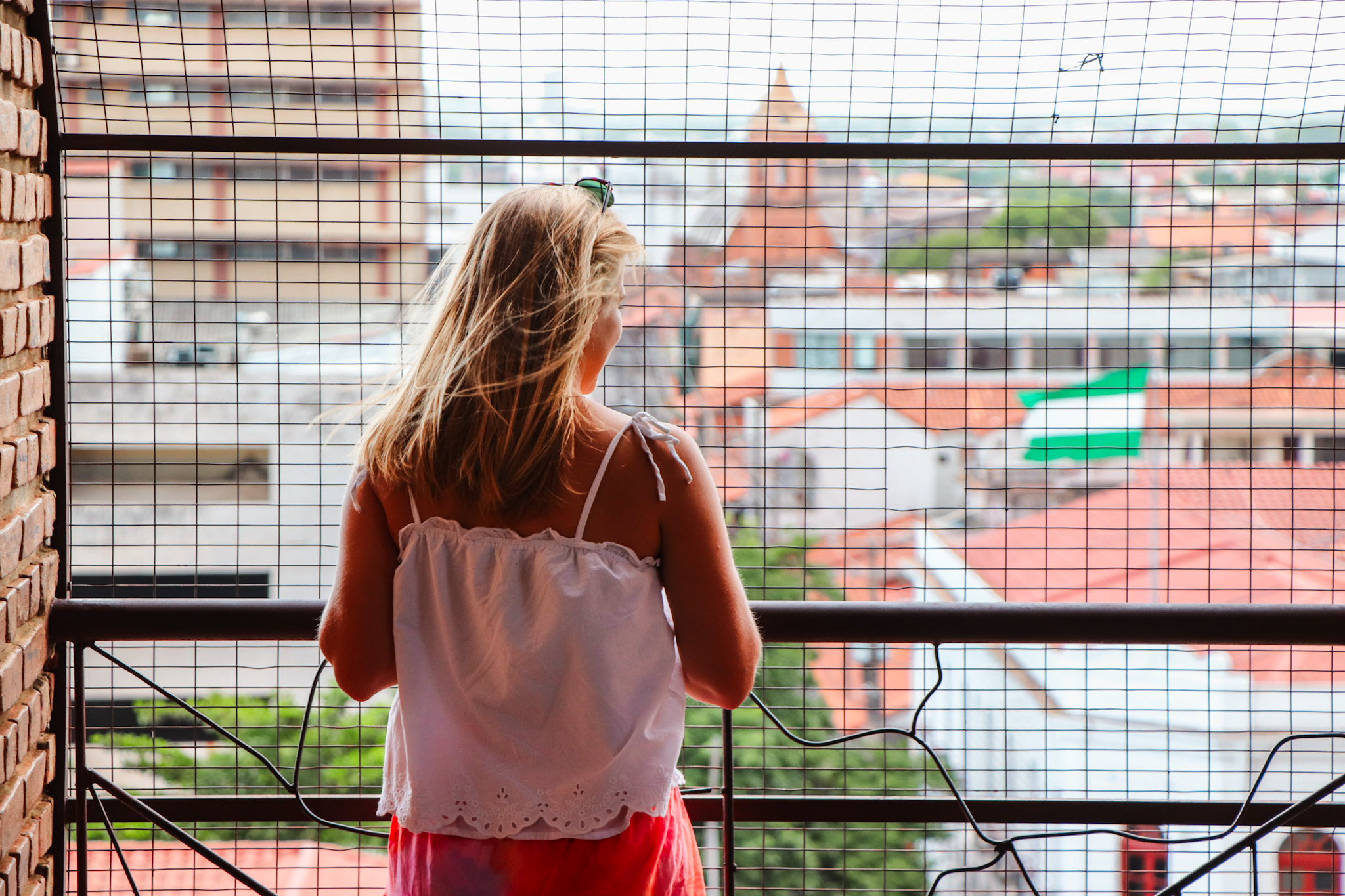
Is going to Santa Cruz worth it?
We would say yes, because of two reasons.
Firstly, we found Santa Cruz to be a very different city, compared to the rest of Bolivia. It is well-developed and modern. The climate is pleasant and yet it remains pretty undiscovered by tourists. Don’t expect to see world wonders, stunning architecture, or superlatives. But count on a place that you can fall in love with on the second look. There must be a reason, why Santa Cruz is slowly becoming a more and more popular city for digital nomadism.
Secondly, there are plenty of things to do around the city. Being close to the rainforest opens up great opportunities to escape into nature. You can go hiking in the National Parks, watch wildlife, or choose to spend a weekend in a village off the big city life of Santa Cruz.

